This post may contain affiliate sales links. Please read my disclosure policy.
Let’s talk about how to make a water bath for a cheesecake! They aren’t hard to set up and the extra step will give you a beautiful, creamy cheesecake free of cracks! Plus, I’ll share with you my tricks for no leaks!
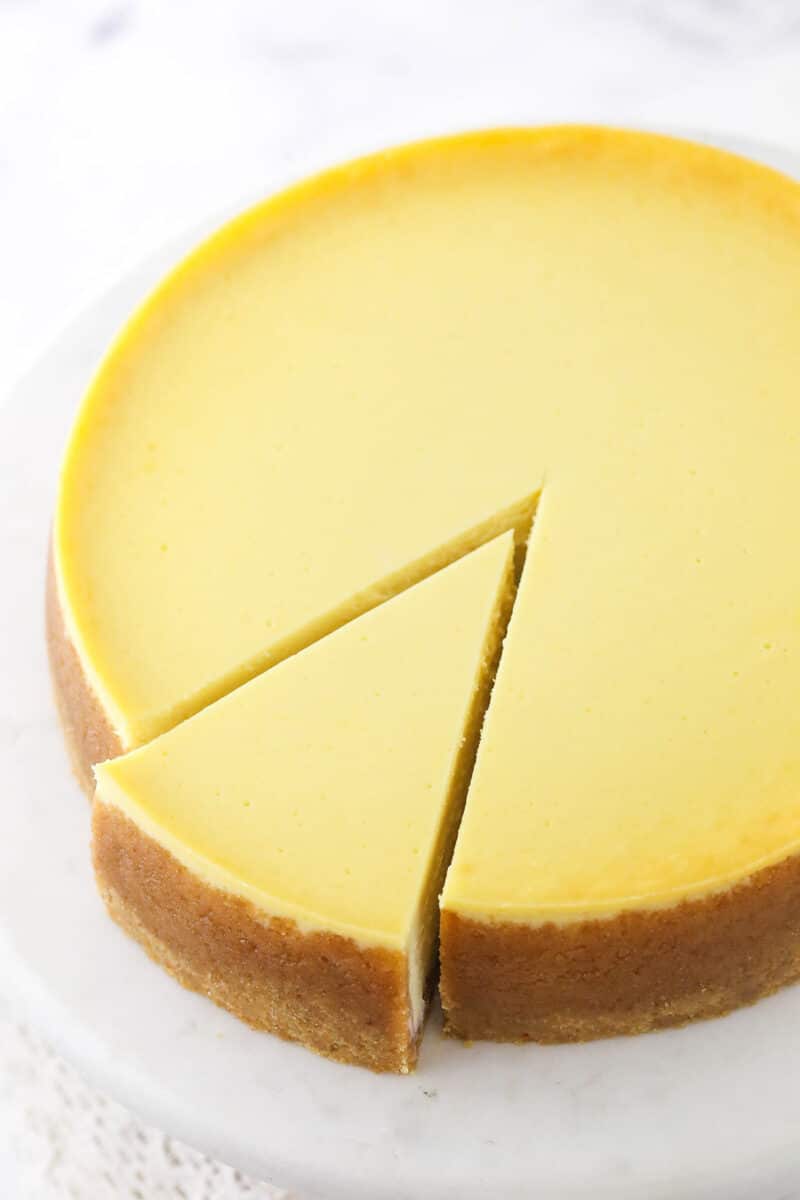
There’s no doubt that I’m a huge fan of cheesecake. The sheer number of cheesecake recipes on my site gives me away. I love the classics and I love unique twists. And with all the cheesecake baking I’ve done over the years, I’ve learned a lot and my number one tip for success is a water bath. If you want a beautiful cheesecake free of cracks, over-browned edges and a sunken middle, you need to use a water bath.
What is a Water Bath?
Cheesecake is basically a custard-based dessert and therefore needs to be treated differently. A water bath, also known as a bain marie, is our secret to the perfect cheesecake. It produces steam that wafts throughout the oven, helping to ensure that the cheesecake cooks evenly and stays nice and creamy. It also moderates the heat on the sides of the pan so that they edges don’t cook much faster than the center.
Why Use a Water Bath?
The benefits of a water bath are plenty. It gives you a cheesecake that:
- Is free of cracks.
- Doesn’t over cook or over brown on the edges.
- Doesn’t sink in the middle while cooking.
- Stays super smooth and creamy.
However, water baths can often be confusing, leak and generally be a pain. So I’m excited to share my methods with you today because they aren’t complicated, won’t leak and it is SO much better than not using a water bath. You spend so much time making a cheesecake – don’t skip this final step and end up with an underwhelming result.
What You’ll Need
I’m going to share a few ways of setting up a water bath. You have options! The first requires the least amount of equipment, but is most likely to leak. The other two will keep you leak-free and really depend on preference. Here’s what equipment you’ll need.
- Springform Pan: You’ll need a 9 inch springform pan for most recipes.
- Large Pan: “Large” is a little vague, but ultimately you need a pan larger than the springform pan that the water will actually go in. It can be a large roasting pan or a large cake pan (I use a 12 inch cake pan).
- Aluminum Foil: This is optional depending on the method you choose. I recommend to long, heavy duty foil.
- Slow Cooker Bags: These are optional depending on the method you choose, but can help prevent your water bath from leaking.
- Large Silicone Pan: This is also optional depending on the method you choose, but it is the easiest method and most likely to prevent leaking. You have to buy the pan, but if you bake a lot of cheesecakes, it will totally be worth it.
- Hot Water: To fill your larger pan.
How to Set Up A Water Bath
Setting up the water bath is a few step process. The wrapping of the pan happens after you bake the crust and adding the hot water happens just before you bake it.
- Make your crust: The first thing you need to do for any cheesecake is properly prep your pan and add your crust. I typically use a graham cracker crust or Oreo crust. I typically pre-bake my crust a bit.
- Prep your pan for the water bath: After you bake your crust, you can go ahead and prep your pan for a water bath using one of the 3 methods below. After prepping the springform pan, place your springform pan into the larger roasting pan or cake pan.
- Add cheesecake filling: Now you can make your cheesecake filling and add it to the crust.
- Add hot water: Bring your pan close to the oven so prevent moving a pan full of water all over the place, then add the hot water to the outer large pan.
- Bake cheesecake: Place your cheesecake and it’s water bath in the oven and bake as directed.
- Cool Cheesecake: When your cheesecake has baked, you can remove it from the water bath, but leave it in the springform pan. You can set the cheesecake on a cooling rack to cool to room temperature and then refrigerate it, or just place it straight in the fridge to cool completely. If you don’t want any condensation forming on top, let it cool to room temperature before refrigerating it.
Three Water Bath Methods
Method 1: Aluminum Foil
For this method, you’ll use aluminum foil around the outside of your springform pan. I’d recommend two or three layers to try to prevent leaking. You also don’t want to crinkle the foil too much at the bottom. It can cause little cracks to form in the foil, which can cause leaking. Leave it a touch looser around the bottom.
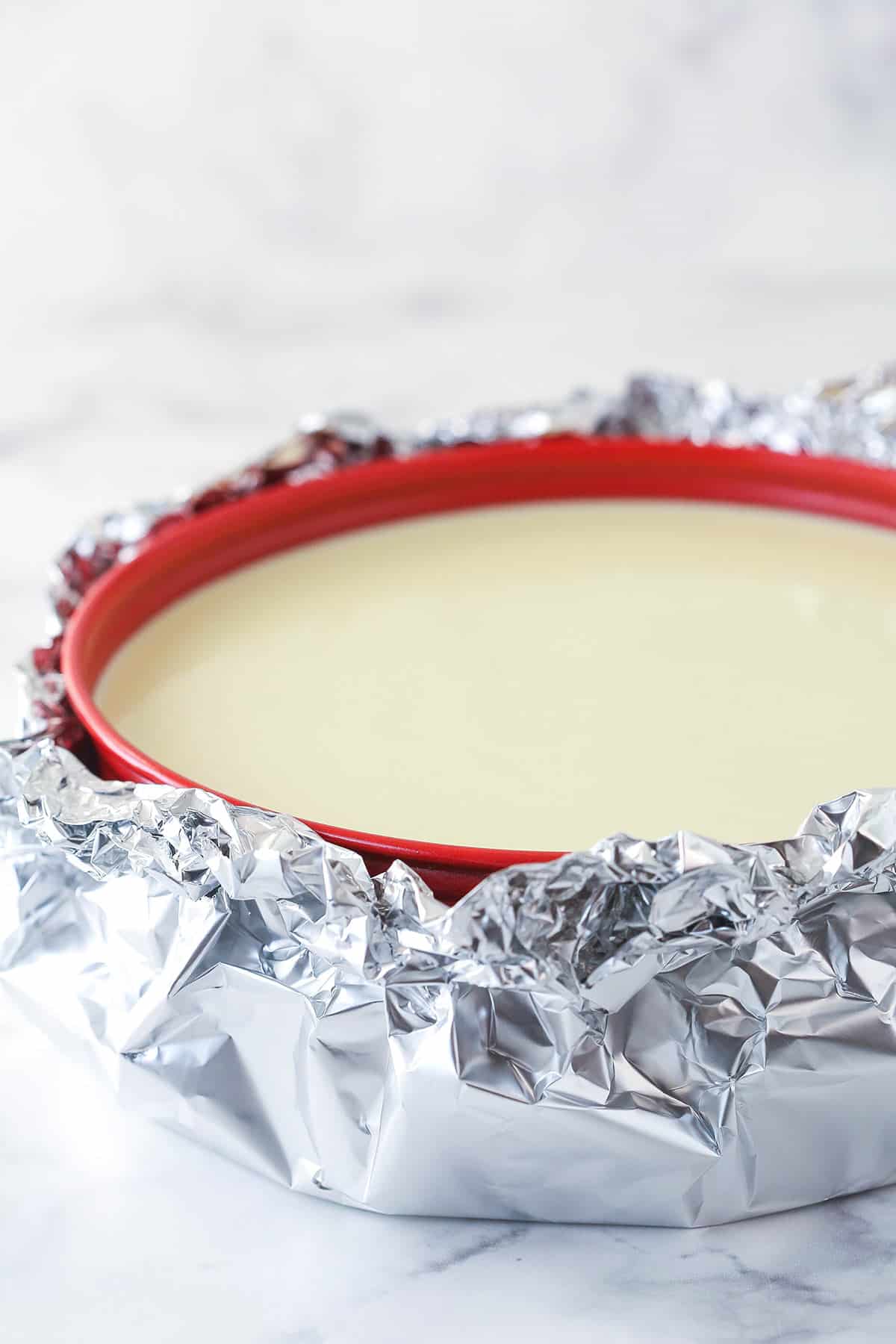
Set your foil-wrapped pan in your larger pan and fill the larger pan with hot water that comes about half way up the side of the springform pan. The water can boil a touch during baking, so you don’t want it to come up too high or the water could “jump” over the foil. Finally, bake your cheesecake according to your recipe.
Method 2: Slow Cooker Bags
I have been using this method for a long time. It was my original method for a leak-proof water bath and I’ve been doing this for years. Slow cooker bags can hold up to the heat and won’t form little holes or cracks, like aluminum foil. For this method, first wrap your springform pan in the slow cooker bag. The bag will be a little big, so tie a knot with the excess.
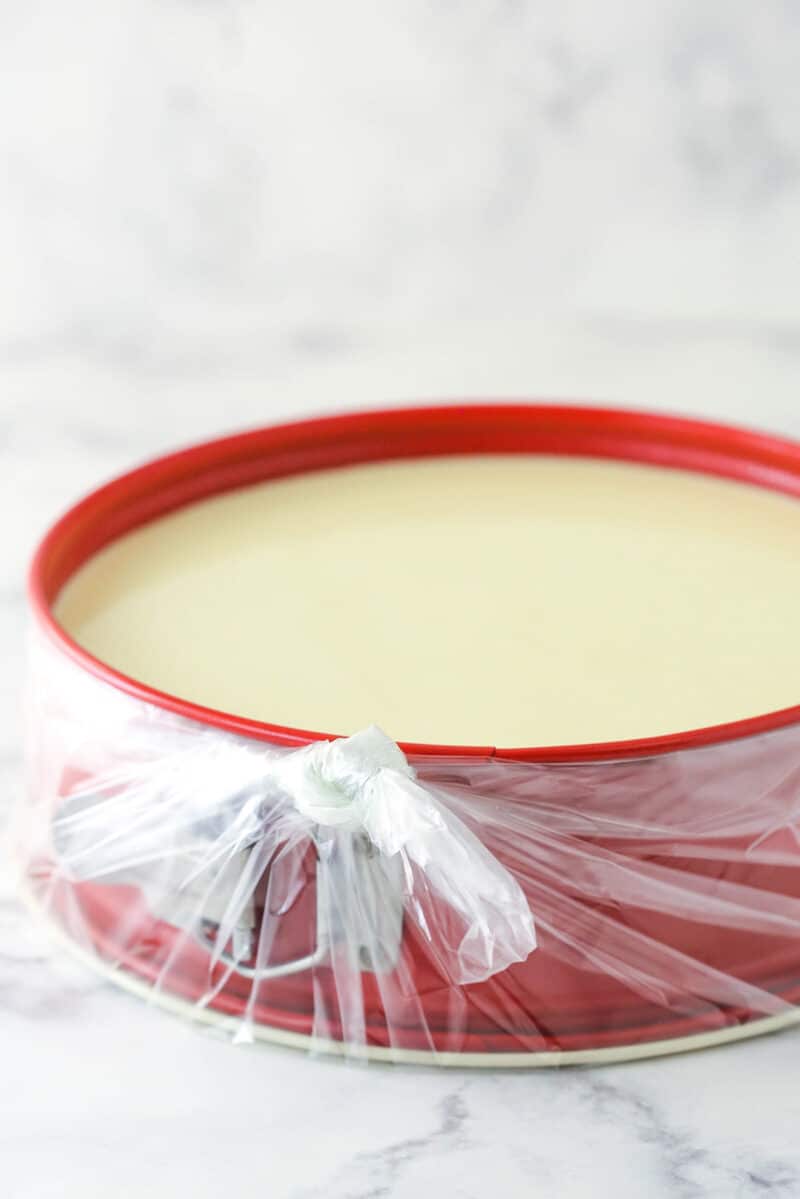
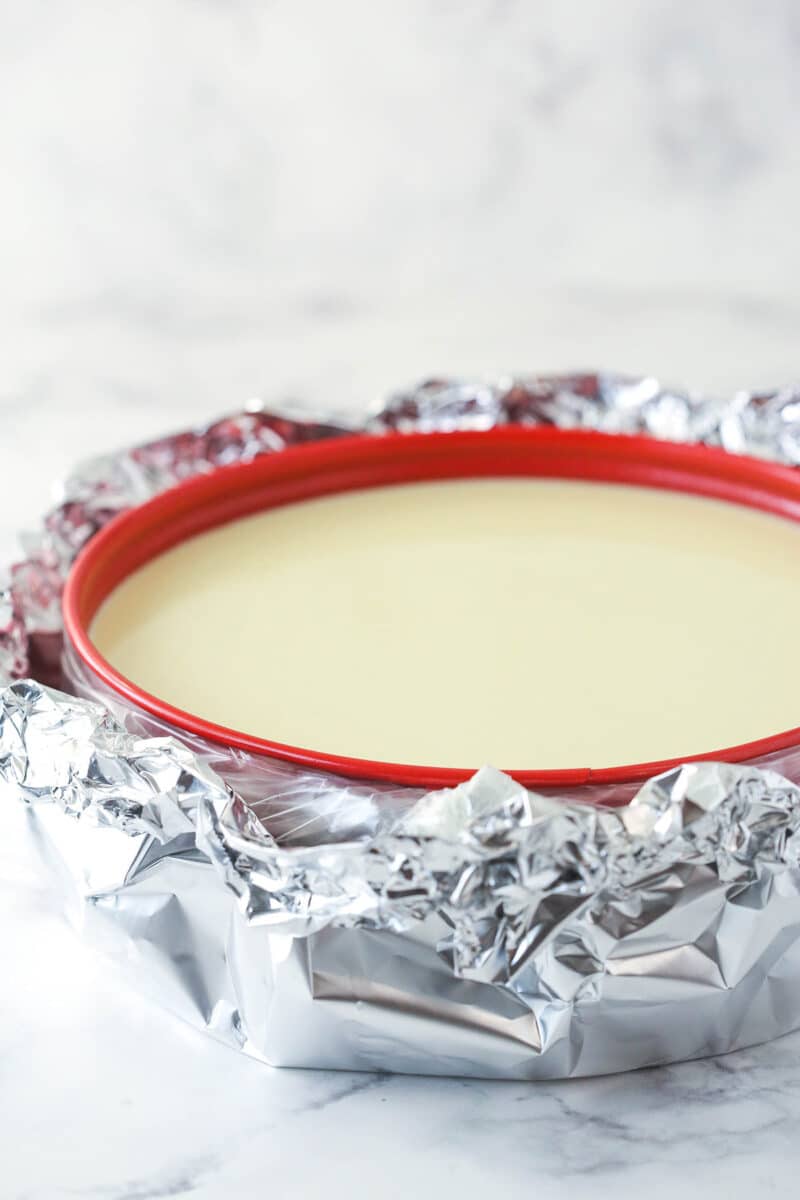
Wrap a layer of foil around the outside of the slow cooker bag, then place the pan in the larger pan. Fill the larger pan with hot water that comes about half way up the side of the springform pan, then bake your cheesecake.
Method 3: Silicone Pan
This is my most recent method. After getting a lot of questions about using a silicone pan in place of the slow cooker bag and foil, I decided to try it. I totally fell in love with this method! No need for wrapping and unwrapping, and no need to worry about leaking. Another plus is that the silicone pan is reusable so you won’t have to buy foil and bags over and over.
So for this method, just set your springform pan in the silicone pan. Place that into the larger pan that will hold the water, then add your hot water and bake. Just keep in mind that the water should only be about halfway up the sides of the silicone pan. You don’t want it to come up too high. The water could boil a touch while baking and you don’t want it to “jump” over the sides of the silicone pan and get into your crust.
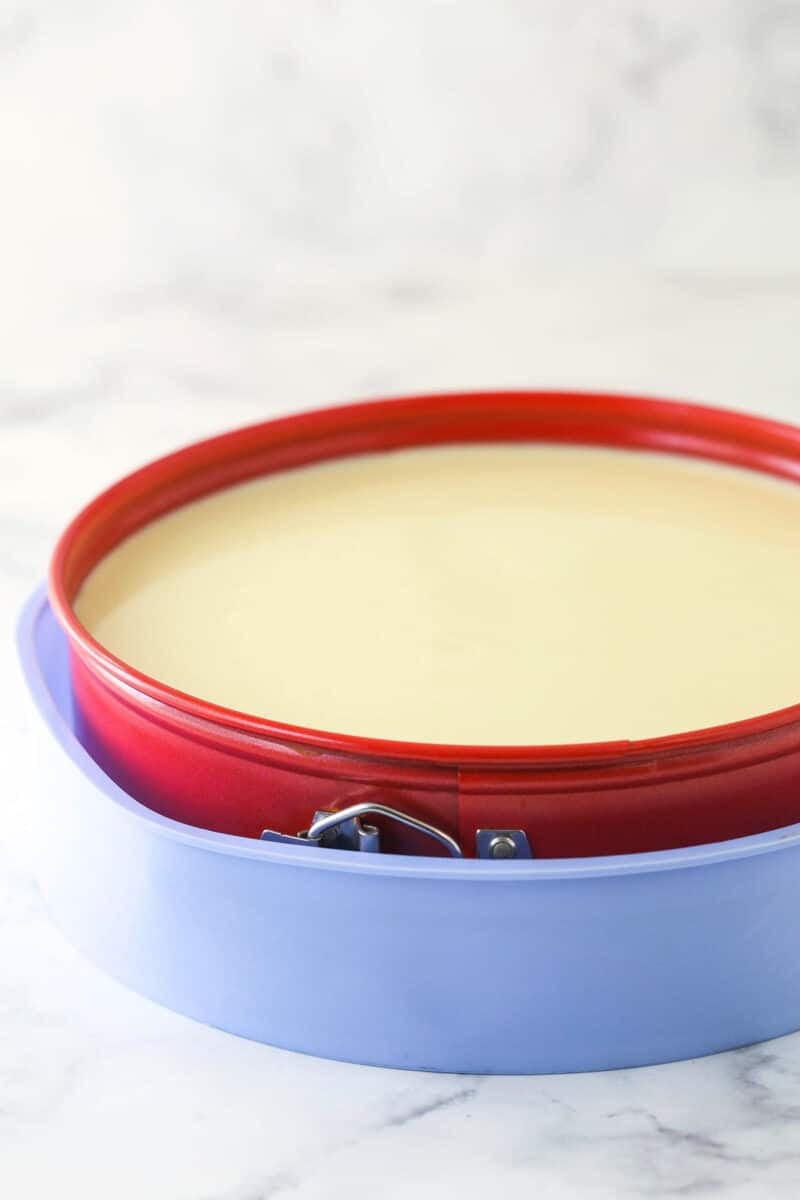
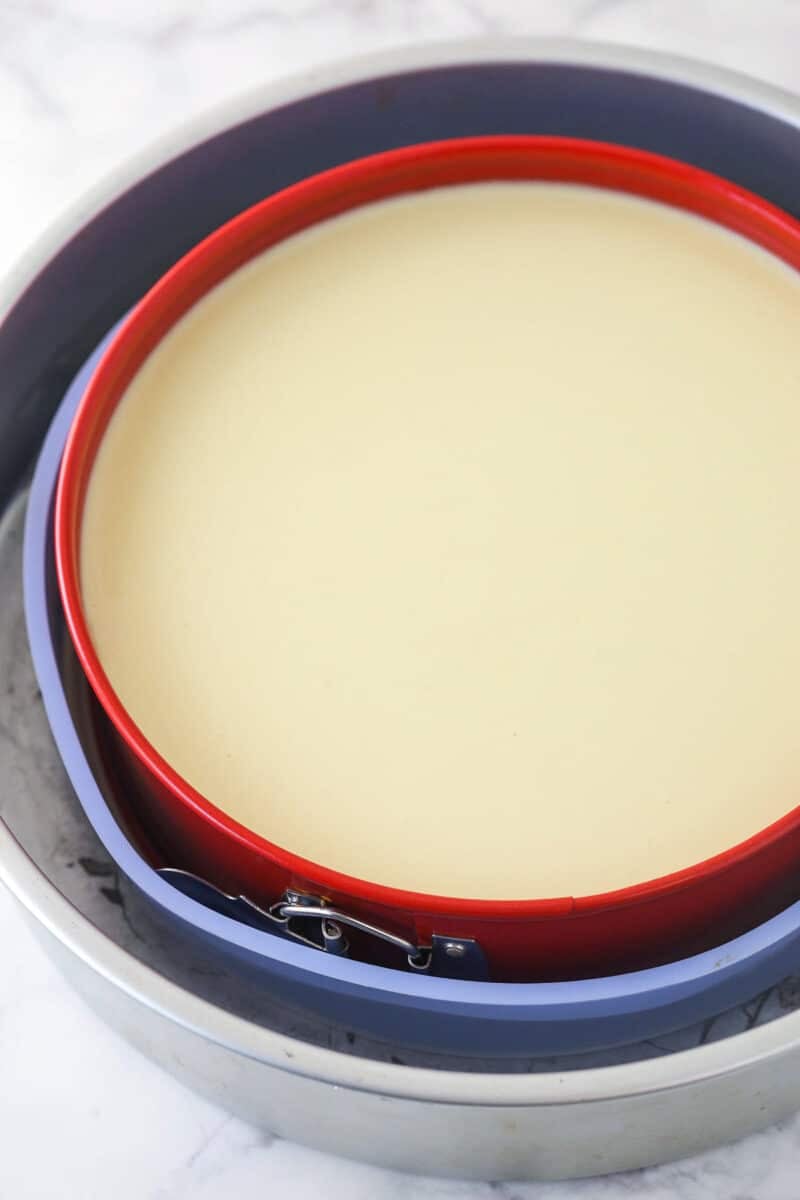
Compare: Cheesecake Baked With and Without a Water Bath
I’ve told you what happens when you bake a cheesecake without a water bath, and showed you how to set one up. Now let’s look at the final result with and without a water bath. Results could vary a bit between recipes (I used my Classic Vanilla Cheesecake), but this is generally what the difference looks like.
Cheesecake Baked with Water Bath
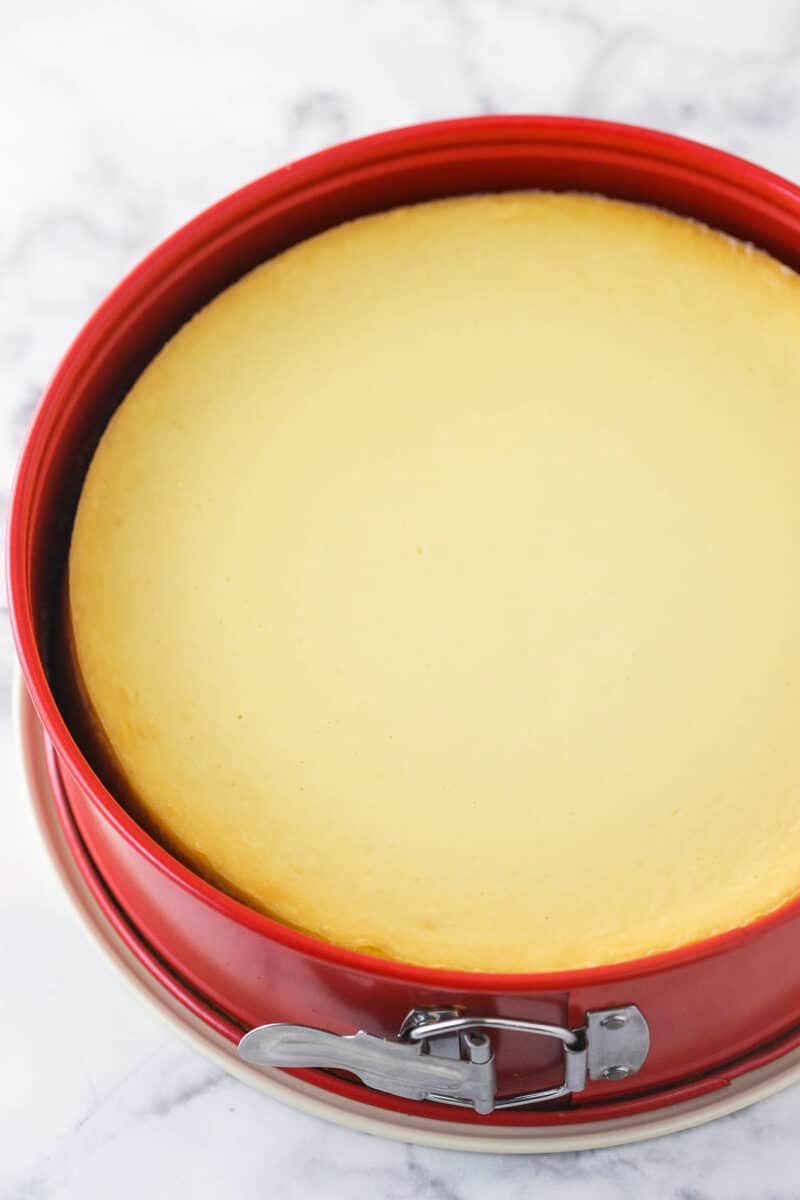
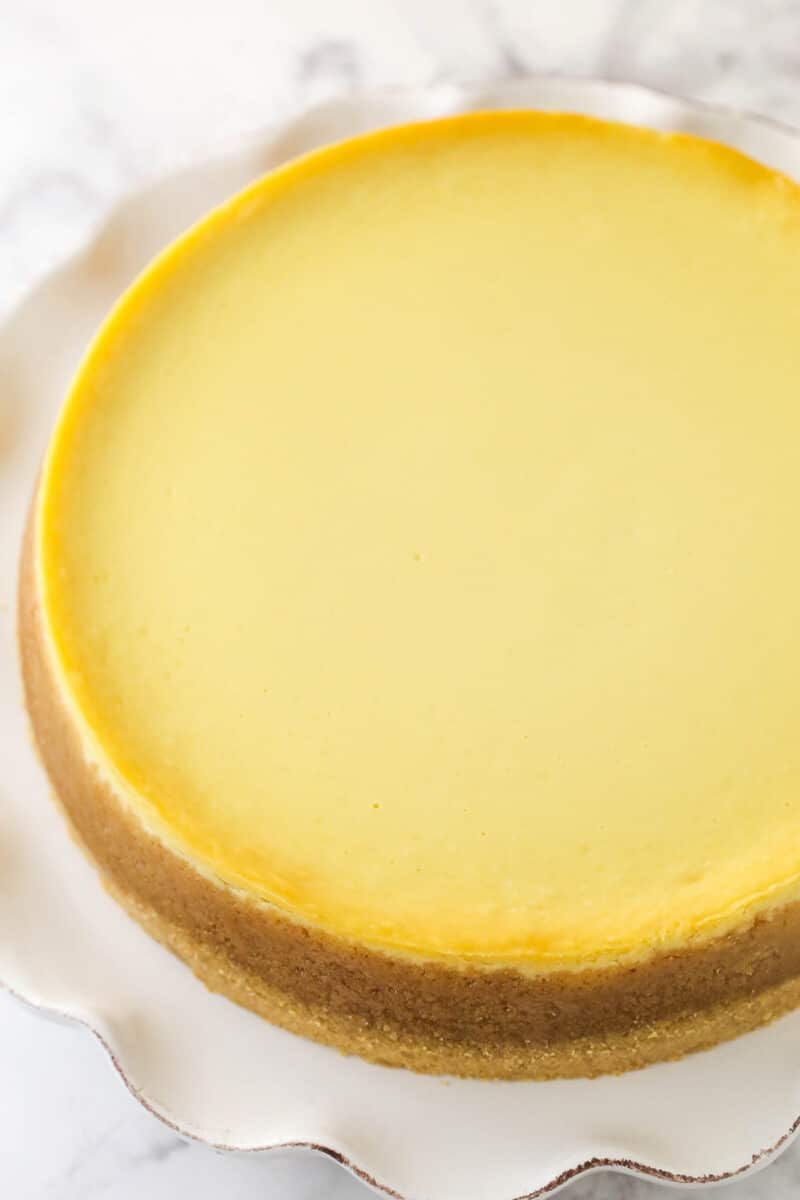
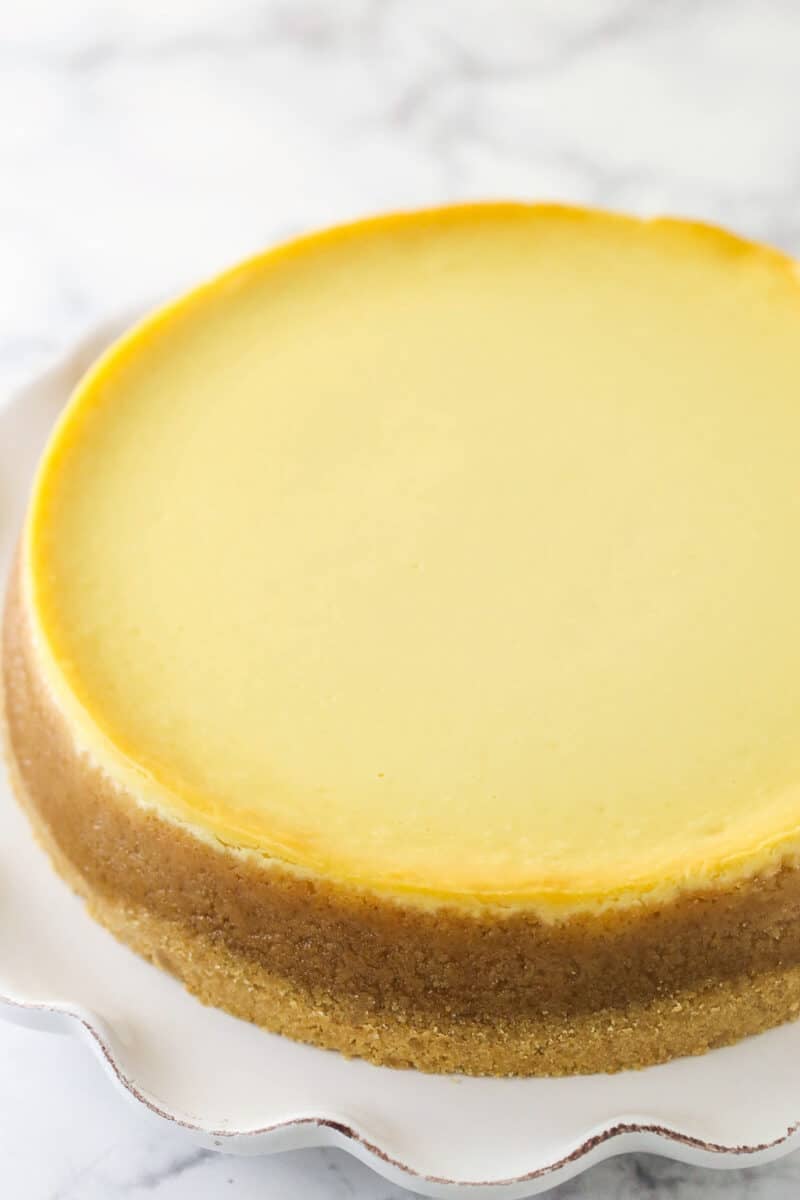
Cheesecake Baked Without Water Bath
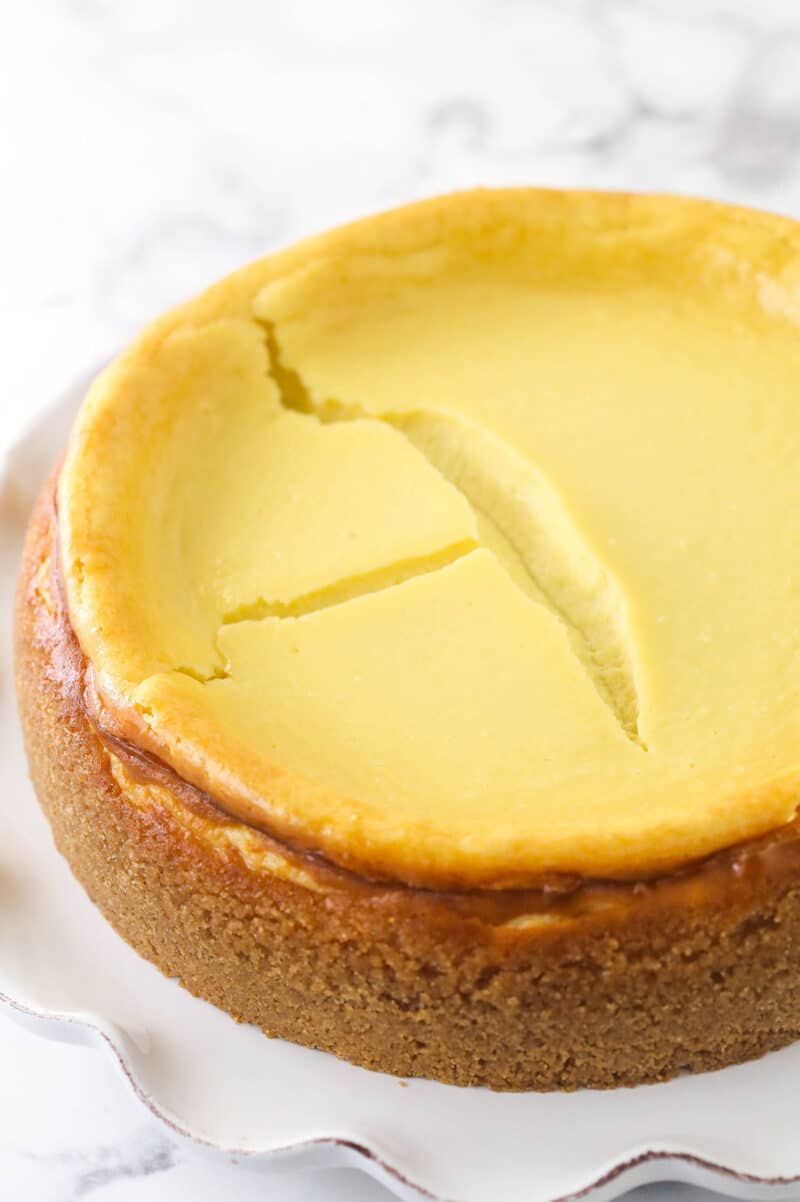
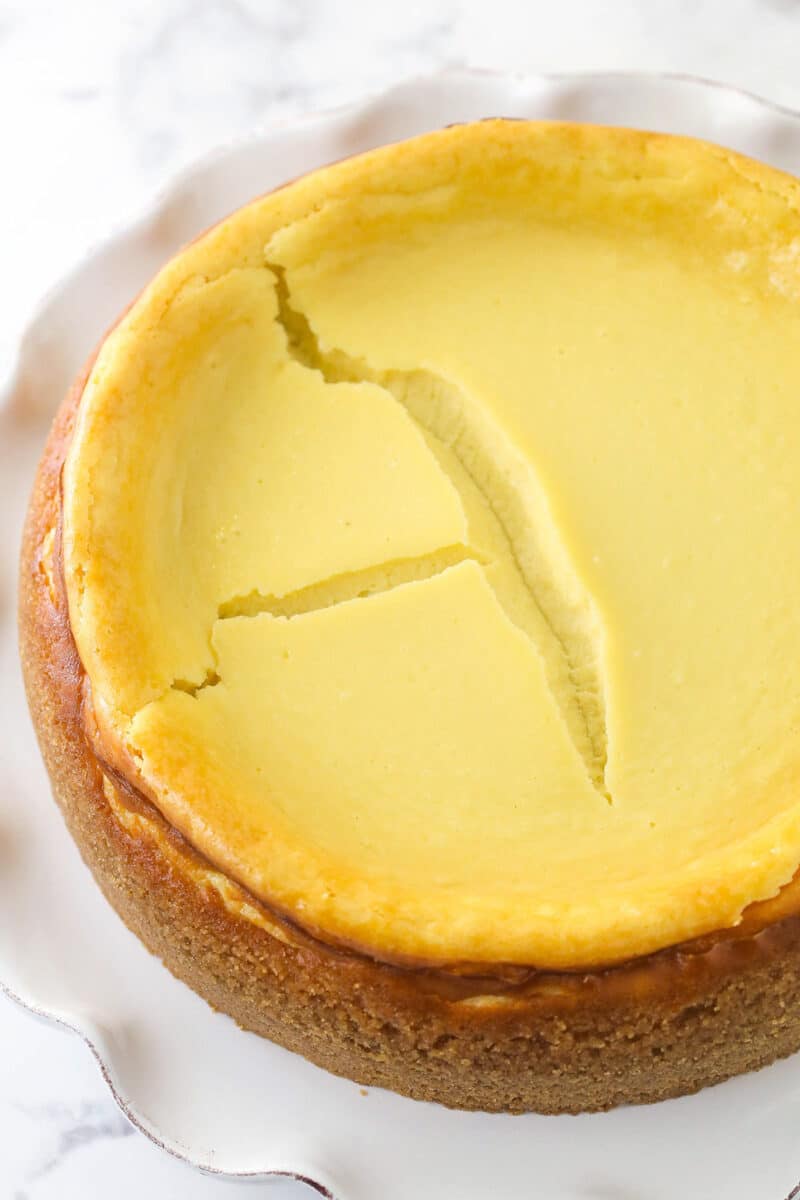
Can I Just Put A Pan Of Water On The Rack Below?
I get this question quite a lot, so I tested it. While your results may vary depending on the recipe, I found that the result was kind of in the middle. It still browned a little more than when you use a water bath and still fell a bit, which you can see in the sides, but otherwise it did well. It didn’t fall in the center and it didn’t crack. So if you’re really averse to using a water bath and don’t mind the slight imperfections, this would certainly be an option.
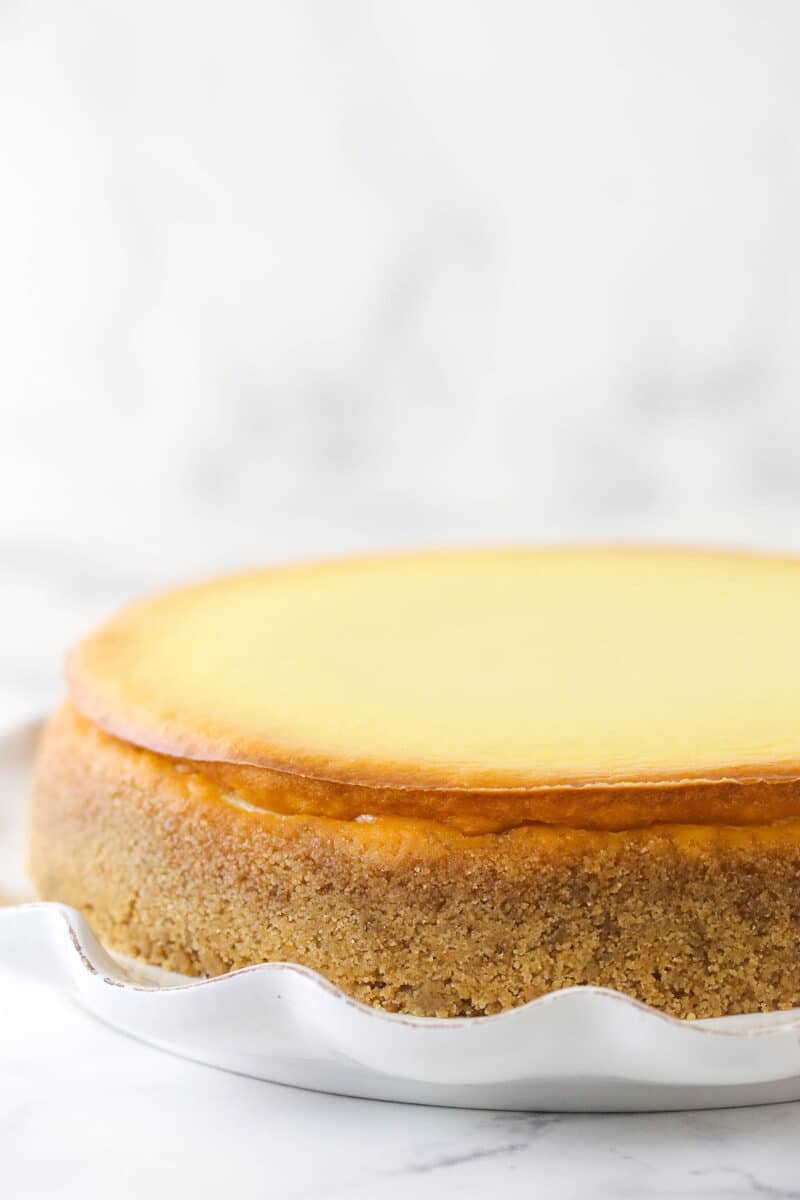
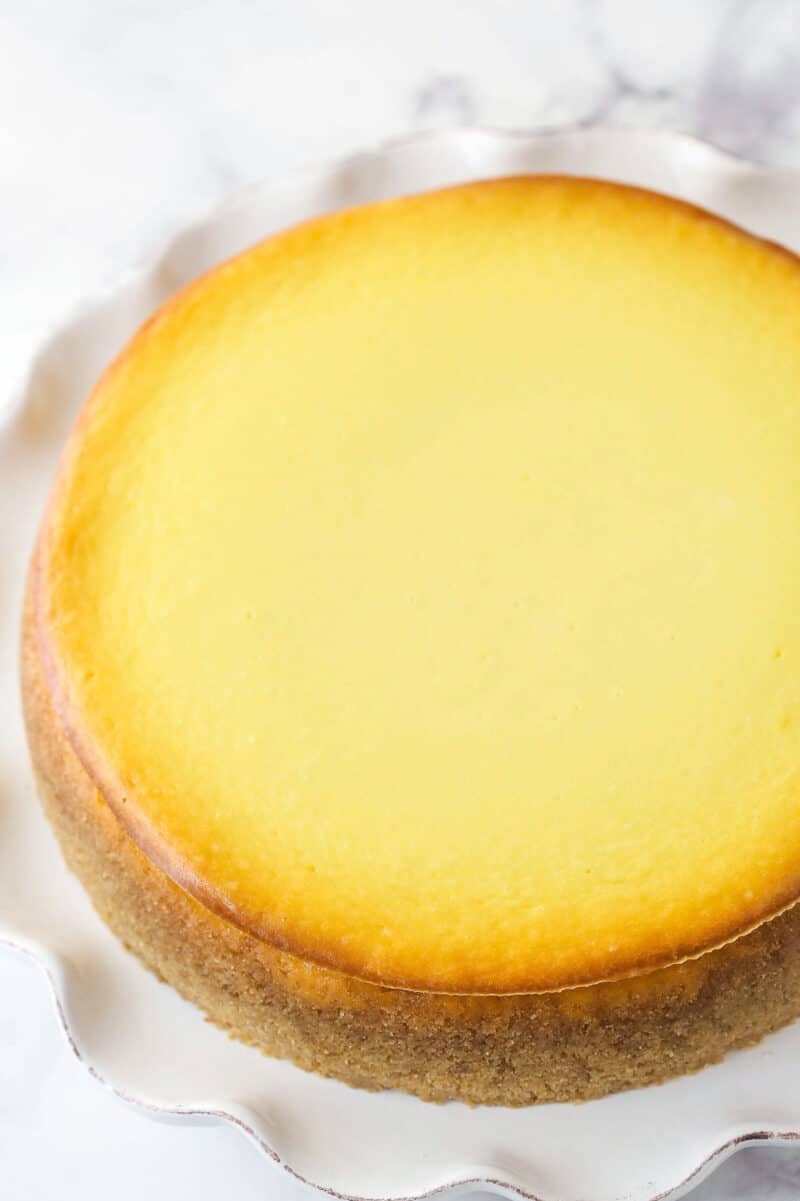
When do I NOT Need a Water Bath?
If you’re using a recipe that doesn’t call for one, then that should be fine. Mini cheesecakes also don’t require a water bath, nor do 9×13 cheesecakes. Their smaller and thinner size means they bake more evenly without having to use a water bath. And of course a no-bake cheesecake doesn’t need one either.
Pro Tips For a Great Cheesecake
- Don’t over or under bake your cheesecake. Check out my post on how to tell when your cheesecake is done baking.
- Add the water to your water bath pan with the pan near the oven. Trying to carry a heavy pan full of water and a cheesecake without it splashing around is not easy.
- Cool it slowly. All of my cheesecake recipes call for a two step cooling method that allows the cheesecake to bake fully while not over baking. It also helps to avoid cracking.
- Let your cheesecake chill and firm up before removing it from the springform pan. When you’re ready, check out my tutorial and video for how to remove a cheesecake from the springform pan.
- When you’re ready to store your cheesecake, check out my post on storing it, freezing it, etc.
- If you want to bake a cheesecake in a size other than a 9 inch pan, check out my guide to adjusting cheesecake sizes.
Now that you know how to do a cheesecake water bath, here are some amazing cheesecake recipes to try:
- Strawberry Cheesecake
- Best Oreo Cheesecake
- New York Style Cheesecake
- Dark Chocolate Cheesecake
- Turtle Cheesecake
- Cinnamon Roll Cheesecake
- Amaretto Cheesecake
- S’mores Cheesecake
- Mint Oreo Cheesecake
- Apple Cinnamon Cheesecake
- German Chocolate Cheesecake
- Red Velvet Cheesecake
- Caramel Apple Cheesecake
- Pumpkin Cheesecake
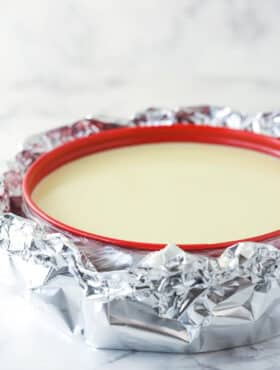
How to Bake Cheesecake in a Water Bath
- Prep Time: 45 minutes
- Cooling Time: 4 hours
- Cook Time: 2 hours 15 minutes
- Total Time: 7 hours
- Yield: 12-14 slices
- Category: Dessert
- Method: Oven
- Cuisine: American
Description
Let’s talk about how to make a water bath for a cheesecake! They aren’t hard to set up and the extra step will give you a beautiful, creamy cheesecake free of cracks! Plus, I’ll share with you my tricks for no leaks!
Ingredients
- Springform pan
- Aluminum foil, optional depending on method
- Slow cooker bags, optional depending on method
- Large silicone pan, optional depending on method
- Large pan (Like a roasting pan or a 12 inch cake pan)
Instructions
- Make your crust: The first thing you need to do for any cheesecake is properly prep your pan and add your crust. I typically use a graham cracker crust or Oreo crust. I typically pre-bake my crust a bit.
- Prep your pan for the water bath: After you bake your crust, you can go ahead and prep your pan for a water bath using one of the 3 methods discussed above. You can either: 1. Wrap your pan in two or three layers of aluminum foil, 2. Wrap you pan in a slow cooker bag and one layer of foil, or 3. Place your springform pan in a slightly larger silicone pan. Place your springform pan into the larger roasting pan or cake pan.
- Add cheesecake filling: Now you can make your cheesecake filling and add it to the crust.
- Add hot water: Bring your pan close to the oven so prevent moving a pan full of water all over the place, then add the hot water to the outer large pan.
- Bake cheesecake: Place your cheesecake and it’s water bath in the oven and bake as directed.
- Cool Cheesecake: When your cheesecake has baked, you can remove it from the water bath, but leave it in the springform pan. You can set the cheesecake on a cooling rack to cool to room temperature and then refrigerate it, or just place it straight in the fridge to cool completely. If you don’t want any condensation forming on top, let it cool to room temperature before refrigerating it.


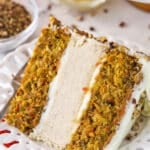
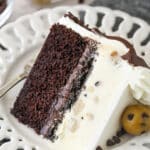

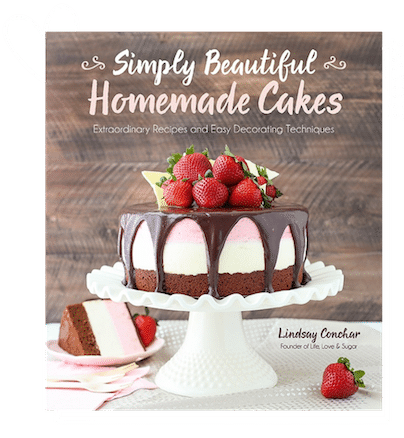
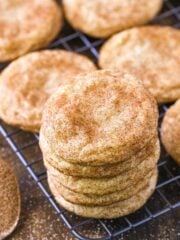
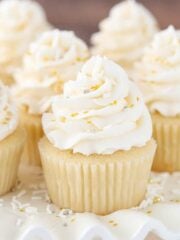
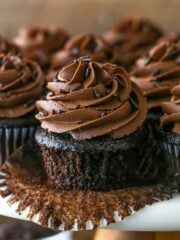

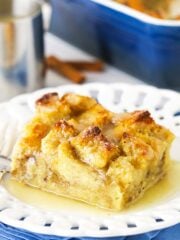
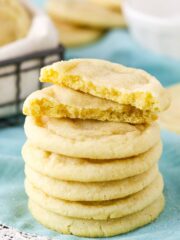
I enjoyed reading your post. However, I always place my springform pan inside a slightly larger pan, usually a silicone pan. No leaks, no fuss.
Made my first cheesecake today, used the crockpot bag idea and there was still water in the bottom. Not much and there was no holes in the bag because I blew in it to make sure… If the water is not to the top how can water still get in?
Great question. I’m not sure how it would have gotten in if there were no holes, unless it somehow came over the top of the bag.
I use the 9 inch Springform pan and put it inside of my 3 inch high 10 inch cake pan. This eliminates the need for foil wrapping. I use my 12 inch cake pan for the water bath . I put water in the 12 inch and press down on the 10 inch on the water in order to get my water level right. Then I heat the water for the water bath , and pour it into the 12 inch pan and put it in the oven after baking the crust. After filling the pan with batter, simply pop the Springform into the 10 inch pan and place into the water bath.
I’ve tried this twice with same liners and still they leaked. I was excruciatingly careful the second time and couldn’t believe it when same thing happened. BUT a cheesecake has been requested again so I’m gonna give it another shot. Wish me luck. I’ll pick up a backup cake just in case!
I actually had that happen recently and I’m convinced it was that particular box of bags. I opened a new box and those were fine.
Same thing happened to me the third time, with a fresh box of bags. I just can’t make this method work for me! I tried a fourth time without a water bath, using a tray of water underneath, and that one came out fine. I think I’m not meant for the water bath method.
On the upside when it happens, I just get an ugly but delicious cheesecake all to myself, so there’s that 🙂
I have had this happen twice with foil only, not with teh bags. That being said I see a trend with water getting through. I think we are all missing something. my guess is that the water is bubbling up over the edges. I am going to try and fill it less high, even if that means add more water part way through baking process.
Could I bake the crust, let it cool, then wrap the pan in the liner bag and the aluminum then pour the filling.
It would be easier not to spill. Is fhere a reason why it shouldn’t be done this way.
Yes, the timing of when you add the wrapping on the pan isn’t so important. It’s mainly that you have it on there when you add it to the water bath and bake it.
Wow! That was a great tip! Why didn’t I ever think of that! 😀. I I would think roasting bags would also work and you can get smaller sizes.
I think I tried roasting bags once and they were a little small.
We were asked to bring desert to a family gathering. I decided to make cheesecake. I bought a ‘leak-proof’ pan and made a chocolate cheesecake with Oreo crust. Wrapped it in foil and baked it. When I pulled it out, I watched the water pour from the bottom of the pan. It dried out (to a point) while being refrigerated, but the crust was not the crumbly crust I wanted. I found this post and duplicated it for a second vanilla cheesecake. Perfect crust! Thank you!!
HI Lindsay, I just found your recipe and method of keeping the water from getting into your cheesecake. This is fantastic The parchment paper on the bottom of the pan,is a fantastic idea as well. I use parchment for baking everything but never thought about putting it on the bottom of my cheesecake pan. Which brings me to my question. Is there a way to remove the bottom of the spring form pan from the chilled cheesecake easily? This is the worst part of making a cheesecake for me, trying to figure out how to flip the whole cheesecake upside down just to peel that bottom part of the pan away without breaking or cracking the whole thing. I made the mistake of asking my sister-in-law what type of cheesecake they’d like this year for our Christmas dinner get together. Unfortunately her favorite is one I’ve never tried making before. “Turtle” cheesecake. I’m not a fan of desserts with caramel in, or on them. Would you offer tips of removing the bottom of the pan please? Thanks so much your recipes are fantastic and I’m so glad I found your page today!
Bonnie in MI.
I googled online and it said that those liners are not oven safe. I’ve never used one of those before in my life and I’m scared it’s going to melt everywhere.
I’m not sure about what it says online, but I have probably made 50 cheesecakes or more with those liners and never had a problem.
I just made a cheesecake using this technique and had a perfect crust!
Ugh! I just baked a cheesecake. The recipe says to do 2 layers of heavy foil- that previously leaked. Tonight I used the bag and a layer of heavy foil. I don’t add as much water as suggested and I still had water in the foil and the bag. What about putting the water on the rack below the baking cheesecake?
I’m sorry you’re having such trouble with it. It really can be a pain. You certainly could try putting the water separately on another rack. I know people often have success with that.
Hi I was just wondering what size pans are u using
Thank you so much for this tip! Brilliant!!
Lindsay, I’ve been making cheesecakes for years but lately have been having problems with leakage so I tried your method of using the crockpot liners. What a difference they made! However I’m still not getting a crisp crust (the cheesecake is awesome but can’t stand a soggy crust!) & wondering what I’m doing wrong, or what you might suggest to fix this problem? I’ve given up trying to have the crust on the sides of the cheesecake as it doesn’t want to stick there, any tips for that? TIA
That’s hard to say. The crust is naturally going to absorb the moisture from the cheesecake itself and there often is some condensation from cooling that the crust may absorb. You could try letting the cheesecake cool completely on the counter before adding it to the fridge, which in theory should cause less condensation. Also be sure to grease the sides of your pan well to help it not stick. Another possibility would be to reduce the amount of butter in your crust and see if that helps. It may not solve it completely but hopefully these things might help!
This is probably a stupid question but what do you use to grease your pan? Butter, shortening, vegetable oil, or something else? I know there are different schools of thought on what’s best. Thanks so much!
I usually use a baking spray. Most often I use either Baker’s Joy or the Wilton spray.
Instead of putting my springform pan directly in water, I put a 9×13 sheet cake pan filled about 2/3 to 3/4 full of warm to hot water in a the oven on the rack below the one I will use for my cheesecake. Then I start making my cheesecake filling, which gives the water time to get really warm and moisten the oven. I get the yummiest cheesecake with no cracks. Best of all, no watery mess!
Can you put the cheesecake in the cake pan then put that in a bigger pan of water so you do not have to use foil ? I tried it and it worked.
If it worked, that’s great. A cake pan just presents a challenge as far as getting the cheesecake out of the pan.